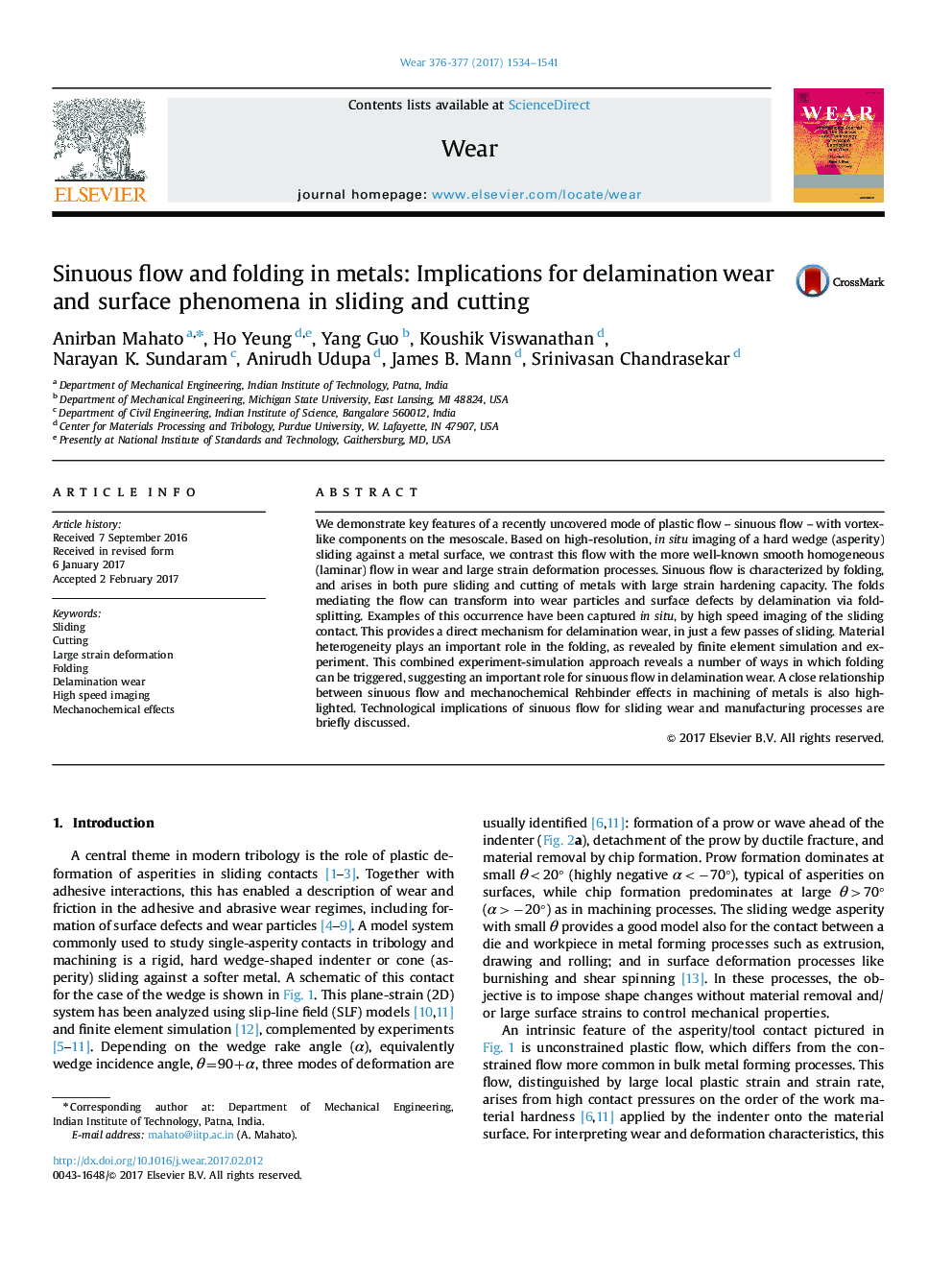| Article ID | Journal | Published Year | Pages | File Type |
|---|---|---|---|---|
| 4986599 | Wear | 2017 | 8 Pages |
Abstract
We demonstrate key features of a recently uncovered mode of plastic flow - sinuous flow - with vortex-like components on the mesoscale. Based on high-resolution, in situ imaging of a hard wedge (asperity) sliding against a metal surface, we contrast this flow with the more well-known smooth homogeneous (laminar) flow in wear and large strain deformation processes. Sinuous flow is characterized by folding, and arises in both pure sliding and cutting of metals with large strain hardening capacity. The folds mediating the flow can transform into wear particles and surface defects by delamination via fold-splitting. Examples of this occurrence have been captured in situ, by high speed imaging of the sliding contact. This provides a direct mechanism for delamination wear, in just a few passes of sliding. Material heterogeneity plays an important role in the folding, as revealed by finite element simulation and experiment. This combined experiment-simulation approach reveals a number of ways in which folding can be triggered, suggesting an important role for sinuous flow in delamination wear. A close relationship between sinuous flow and mechanochemical Rehbinder effects in machining of metals is also highlighted. Technological implications of sinuous flow for sliding wear and manufacturing processes are briefly discussed.
Keywords
Related Topics
Physical Sciences and Engineering
Chemical Engineering
Colloid and Surface Chemistry
Authors
Anirban Mahato, Ho Yeung, Yang Guo, Koushik Viswanathan, Narayan K. Sundaram, Anirudh Udupa, James B. Mann, Srinivasan Chandrasekar,
